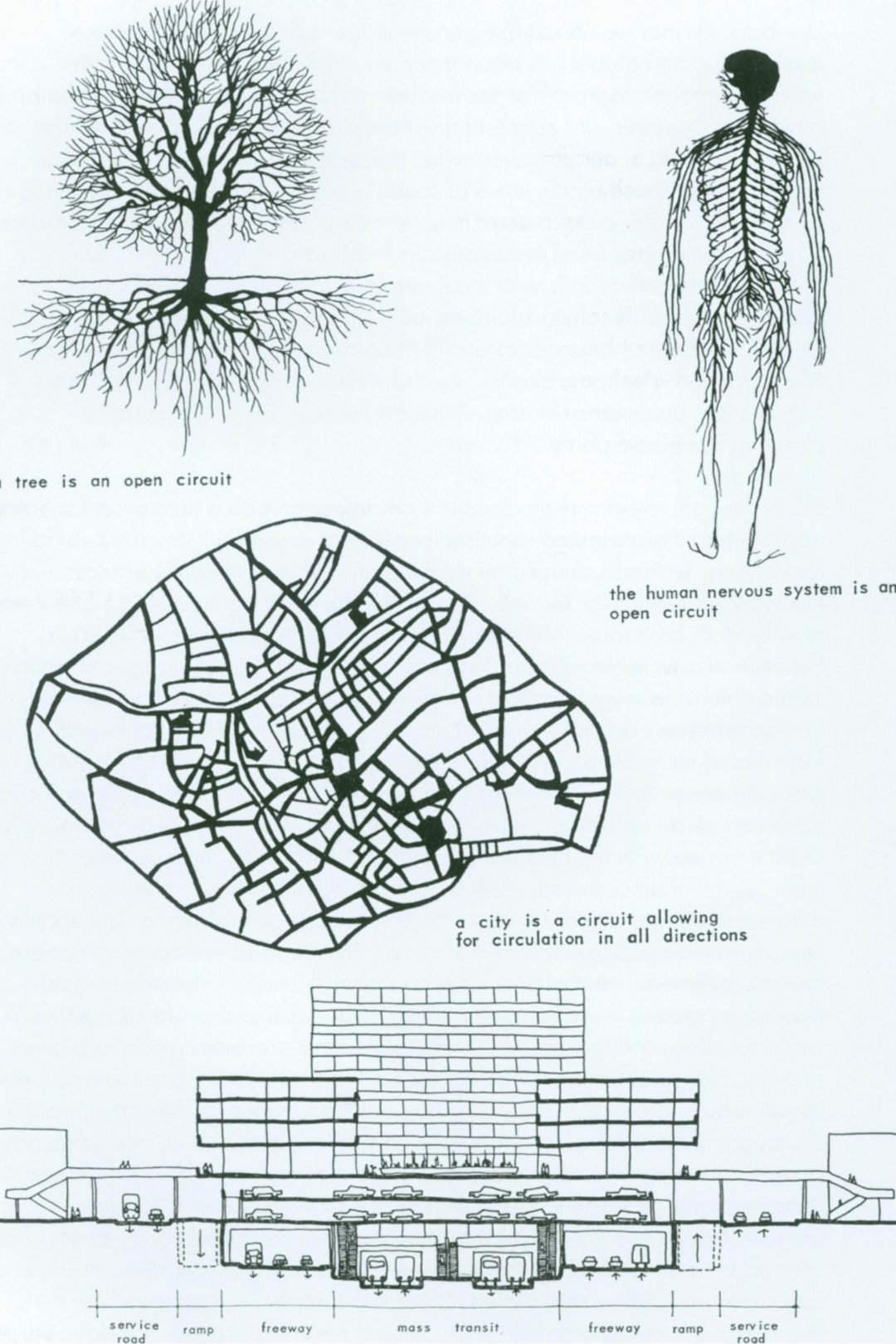The complex set of studies Dioxiadis approached throughout his professional career challenges the way in which we define modernism. His observation may be controversial, however his well thought concepts may be enough of a developed catalogue from which any of us can build a conclusion. What truly intrigues me about the image I’m choosing to describe modernism is the biological study of the human body for the purpose of furthering spacial interactions between different sets of environments. To tackle these broad topics Doxiadis establishes the fundamental patterns and similarities between nature and the human himself. Diving into these pattern observation as he did with the tree and the human body, he’s then able to establish what can be a familiar experience for people to interact from. As I saw bellow his biological observations, he created a system within a building that emphasizes mass in the lower middle ground and thins out into extremities just as seen from the perspective of a tree.
As I read that he had “to protect global ecosystem against the onslaught of rampant urbanization”, I understood his perception of the macro impact this urbanization would have on the world and therefore what pushed his studies of the natural patterns around the human being along with his conception of the ideal “Ecumenokepos”. A global garden reflecting the principles of Ekistics. Doxiadis’s use of Ekistics strongly gravitated around the usefulness of a framework incorporating coherent developmentalism through scientific studies. These complex studies were developed around five elements the urban planner deemed valuable “nature, anthropos, society, shells and networks”. In the end what truly remained productive from this framework was one’s ability to notice interrelationships between spaces dedicated to the values Doxiades had evaluated as fundamental.

